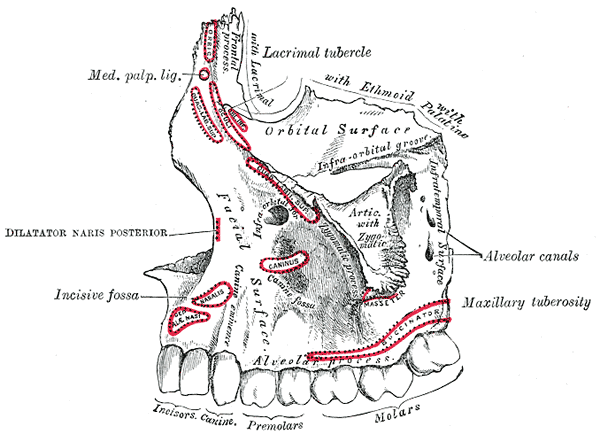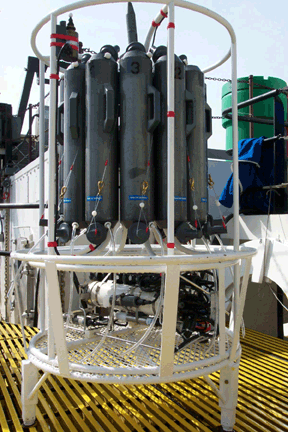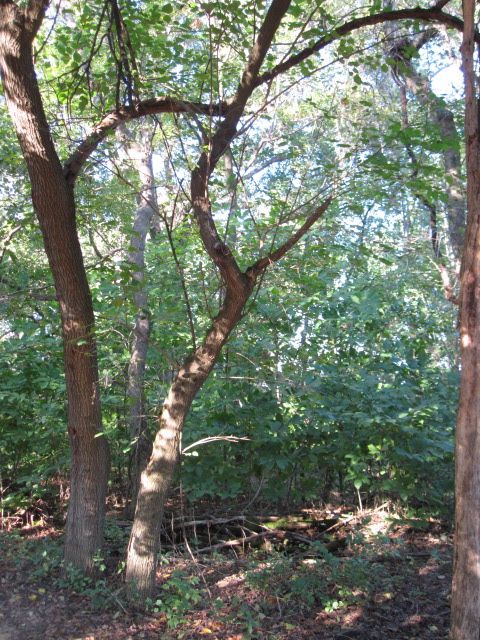|
Silver Carp
The silver carp or silverfin (''Hypophthalmichthys molitrix'') is a species of freshwater cyprinid fish, a variety of Asian carp native to China and eastern Siberia, from the Amur River drainage in the north to the Xi Jiang River drainage in the south. Although a threatened species in its natural habitat, it has long been cultivated in China as one of the "Four Famous Domestic Fish" (''四大家鱼'') together with bighead carp, black carp and grass carp. By weight, more silver carp are produced worldwide in aquaculture than any other species of fish except for the grass carp. Silver carp are usually farmed in polyculture with other Asian carp, or sometimes with catla or other fish species. The species has also been introduced, or spread by connected waterways, to at least 88 countries around the world. The reason for importation was generally for use in aquaculture, but enhancement of wild fisheries and water quality control have also been intended on occasion. In ... [...More Info...] [...Related Items...] OR: [Wikipedia] [Google] [Baidu] |
Achille Valenciennes
Achille Valenciennes (9 August 1794 – 13 April 1865) was a French zoology, zoologist. Valenciennes was born in Paris, and studied under Georges Cuvier. His study of parasitic worms in humans made an important contribution to the study of parasitology. He also carried out diverse systematic classifications, linking fossil and current species. He worked with Cuvier on the 22-volume "''Histoire Naturelle des Poissons''" (Natural History of Fish) (1828–1848), carrying on alone after Cuvier died in 1832. In 1832, he succeeded Henri Marie Ducrotay de Blainville (1777–1850) as chair of ''Histoire naturelle des mollusques, des vers et des zoophytes'' at the Muséum national d'histoire naturelle. Early in his career, he was given the task of classifying animals described by Alexander von Humboldt (1769–1859) during his travels in the American tropics (1799 to 1803), and a lasting friendship was established between the two men. He is the binomial authority for many species of fish, ... [...More Info...] [...Related Items...] OR: [Wikipedia] [Google] [Baidu] |
Bighead Carp
The bighead carp (''Hypophthalmichthys nobilis'') is a species of cyprinid freshwater fish native to East Asia, and is one of several Asian carps introduced into North America. It is one of the most intensively exploited fishes in fish farming, with an annual worldwide production of over three million tonnes in 2013, principally from China. They are omnivores, consuming both algae and zooplankton. Bighead carp, together with black carp, silver carp, and grass carp, make up the culturally important "four famous domestic fishes" used in polyculture in China for over a thousand years. It is widely farmed for food and chinese medicine. Description The bighead carp has a large, scaleless head, a large mouth, and eyes located very low on the head. Adults usually have a mottled silver-gray coloration. It is a large fish; a typical length is , and maximum observed size of and . Distribution Bighead carp are native to large rivers and are associated with floodplain lakes of eas ... [...More Info...] [...Related Items...] OR: [Wikipedia] [Google] [Baidu] |
Stomach
The stomach is a muscular, hollow organ in the upper gastrointestinal tract of Human, humans and many other animals, including several invertebrates. The Ancient Greek name for the stomach is ''gaster'' which is used as ''gastric'' in medical terms related to the stomach. The stomach has a dilated structure and functions as a vital organ in the digestive system. The stomach is involved in the gastric phase, gastric phase of digestion, following the cephalic phase in which the sight and smell of food and the act of chewing are stimuli. In the stomach a chemical breakdown of food takes place by means of secreted digestive enzymes and gastric acid. It also plays a role in regulating gut microbiota, influencing digestion and overall health. The stomach is located between the esophagus and the small intestine. The pyloric sphincter controls the passage of partially digested food (chyme) from the stomach into the duodenum, the first and shortest part of the small intestine, where p ... [...More Info...] [...Related Items...] OR: [Wikipedia] [Google] [Baidu] |
Buccal Cavity
The buccal space (also termed the buccinator space) is a fascial space of the head and neck (sometimes also termed fascial tissue spaces or tissue spaces). It is a potential space in the cheek, and is paired on each side. The buccal space is superficial to the buccinator muscle and deep to the platysma muscle and the skin. The buccal space is part of the subcutaneous space, which is continuous from head to toe. Structure Boundaries The boundaries of each buccal space are: * the angle of the mouth anteriorly, * the masseter muscle posteriorly, * the zygomatic process of the maxilla and the zygomaticus muscles superiorly, * the depressor anguli oris muscle and the attachment of the deep fascia to the mandible inferiorly, * the buccinator muscle medially (the buccal space is superficial to the buccinator), * the platysma muscle, subcutaneous tissue and skin laterally (the space is deep to platysma). Communications * to the pterygomandibular space, infratemporal space, submasseter ... [...More Info...] [...Related Items...] OR: [Wikipedia] [Google] [Baidu] |
Gill Raker
Gill rakers in fish are bony or cartilaginous processes that project from the branchial arch (gill arch) and are involved with suspension feeding tiny prey. They are not to be confused with the gill filaments that compose the fleshy part of the gill used for gas exchange. Rakers are usually present in two rows, projecting from both the anterior and posterior side of each gill arch. Rakers are widely varied in number, spacing, and form. By preventing food particles from exiting the spaces between the gill arches, they enable the retention of food particles in filter feeders. The structure and spacing of gill rakers in fish determines the size of food particles trapped, and correlates with feeding behavior. Fish with densely spaced, elongated, comb-like gill rakers are efficient at filtering tiny prey, whereas carnivores and omnivores often have more widely spaced gill rakers with secondary projections. Because gill raker characters often vary between closely related taxa, they a ... [...More Info...] [...Related Items...] OR: [Wikipedia] [Google] [Baidu] |
Filter Feeder
Filter feeders are aquatic animals that acquire nutrients by feeding on organic matters, food particles or smaller organisms (bacteria, microalgae and zooplanktons) suspended in water, typically by having the water pass over or through a specialized filtering organ that sieves out and/or traps solids. Filter feeders can play an important role in condensing biomass and removing excess nutrients (such as nitrogen and phosphate) from the local waterbody, and are therefore considered water-cleaning ecosystem engineers. They are also important in bioaccumulation and, as a result, as indicator organisms. Filter feeders can be sessile, planktonic, nektonic or even neustonic (in the case of the buoy barnacle) depending on the species and the niches they have evolved to occupy. Extant species that rely on such method of feeding encompass numerous phyla, including poriferans ( sponges), cnidarians (jellyfish, sea pens and corals), arthropods ( krill, mysids and barna ... [...More Info...] [...Related Items...] OR: [Wikipedia] [Google] [Baidu] |
Invasive Species
An invasive species is an introduced species that harms its new environment. Invasive species adversely affect habitats and bioregions, causing ecological, environmental, and/or economic damage. The term can also be used for native species that become harmful to their native environment after human alterations to its food web. Since the 20th century, invasive species have become serious economic, social, and environmental threats worldwide. Invasion of long-established ecosystems by organisms is a natural phenomenon, but human-facilitated introductions have greatly increased the rate, scale, and geographic range of invasion. For millennia, humans have served as both accidental and deliberate dispersal agents, beginning with their earliest migrations, accelerating in the Age of Discovery, and accelerating again with the spread of international trade. Notable invasive plant species include the kudzu vine, giant hogweed (''Heracleum mantegazzianum''), Japanese knotw ... [...More Info...] [...Related Items...] OR: [Wikipedia] [Google] [Baidu] |
Water Quality
Water quality refers to the chemical, physical, and biological characteristics of water based on the standards of its usage. It is most frequently used by reference to a set of standards against which compliance, generally achieved through treatment of the water, can be assessed. The most common standards used to monitor and assess water quality convey the health of ecosystems, safety of human contact, extent of water pollution and condition of drinking water. Water quality has a significant impact on water supply and often determines supply options. Impacts on public health Over time, there has been increasing recognition of the importance of drinking water quality and its impact on public health. This has led to increasing protection and management of water quality. Text was copied from this source, which is available under a creativecommons:by/4.0/, Creative Commons Attribution 4.0 International License The understanding of the links between water quality and healt ... [...More Info...] [...Related Items...] OR: [Wikipedia] [Google] [Baidu] |
Wild Fisheries Of The World
A wild fishery is a natural body of water with a sizeable free-ranging fish or other aquatic animal (crustaceans and molluscs) population that can be harvested for its commercial value. Wild fisheries can be marine ( saltwater) or lacustrine/ riverine (freshwater), and rely heavily on the carrying capacity of the local aquatic ecosystem. Wild fisheries are sometimes called capture fisheries. The aquatic life they support is not artificially controlled in any meaningful way and needs to be "captured" or fished. Wild fisheries exist primarily in the oceans, and particularly around coasts and continental shelves, but also exist in lakes and rivers. Issues with wild fisheries are overfishing and pollution. Significant wild fisheries have collapsed or are in danger of collapsing, due to overfishing and pollution. Overall, production from the world's wild fisheries has levelled out, and may be starting to decline. As a contrast to wild fisheries, farmed fisheries can operate in she ... [...More Info...] [...Related Items...] OR: [Wikipedia] [Google] [Baidu] |
Introduced Species
An introduced species, alien species, exotic species, adventive species, immigrant species, foreign species, non-indigenous species, or non-native species is a species living outside its native distributional range, but which has arrived there by human activity, directly or indirectly, and either deliberately or accidentally. Non-native species can have various effects on the local ecosystem. Introduced species that become established and spread beyond the place of introduction are considered naturalized. The process of human-caused introduction is distinguished from biological colonization, in which species spread to new areas through "natural" (non-human) means such as storms and rafting. The Latin expression neobiota captures the characteristic that these species are ''new'' biota to their environment in terms of established biological network (e.g. food web) relationships. Neobiota can further be divided into neozoa (also: neozoons, sing. neozoon, i.e. animals) and ne ... [...More Info...] [...Related Items...] OR: [Wikipedia] [Google] [Baidu] |
Catla
Catla (''Labeo catla''; ) also known as the major South Asian carp, is an economically important South Asian freshwater fish in the carp family Cyprinidae. It is native to rivers and lakes in northern India, Bangladesh, Myanmar, Nepal, and Pakistan, but has also been introduced elsewhere in South Asia and is commonly farmed. In Nepal and neighbouring regions of India, up to Odisha, it is called Bhakura. Catla is a fish with large and broad head, a large protruding lower jaw, and upturned mouth. It has large, greyish scales on its dorsal side with a whitish belly. It reaches up to in length and in weight. Catla is a surface and midwater feeder. Adults feed on zooplankton using large gill rakers, while young ones feed on both zooplankton and phytoplankton. Catla attains sexual maturity at an average age of two years and an average weight of . Taxonomy The catla was formerly listed as the only species in the genus ''Catla'', but this was a synonym of the genus ''Gibelion''. ... [...More Info...] [...Related Items...] OR: [Wikipedia] [Google] [Baidu] |
Polyculture
In agriculture, polyculture is the practice of growing more than one crop species together in the same place at the same time, in contrast to monoculture, which had become the dominant approach in developed countries by 1950. Traditional examples include the intercropping of the Three Sisters (agriculture), Three Sisters, namely maize, beans, and Cucurbita, squashes, by indigenous peoples of Central and North America, the rice-fish systems of Asia, and the complex mixed cropping systems of Nigeria. Polyculture offers multiple advantages, including increasing total yield, as multiple crops can be harvested from the same land, along with reduced risk of crop failure. Resources are used more efficiently, requiring less inputs of fertilizers and pesticides, as interplanted crops suppress weeds, and legumes can Nitrogen fixation, fix nitrogen. The increased diversity tends to reduce losses from Pest control, pests and plant diseases, diseases. Polyculture can yield multiple harvests ... [...More Info...] [...Related Items...] OR: [Wikipedia] [Google] [Baidu] |









